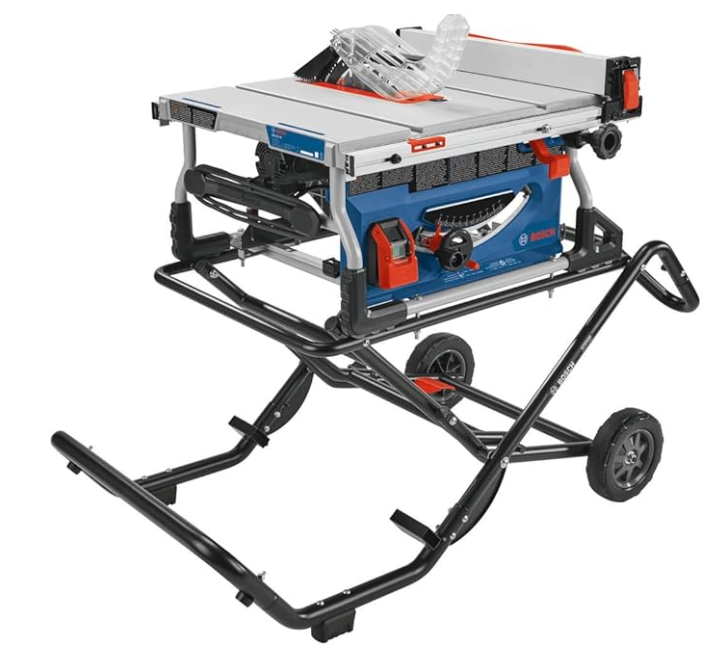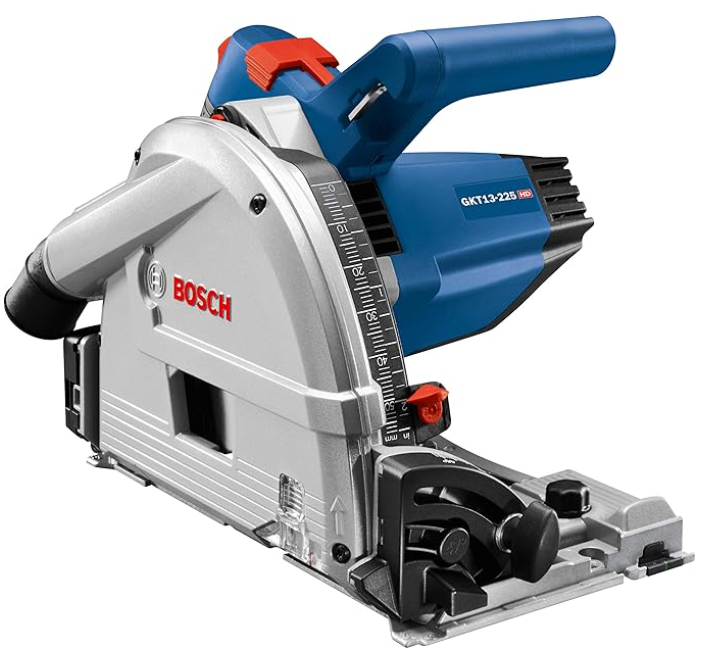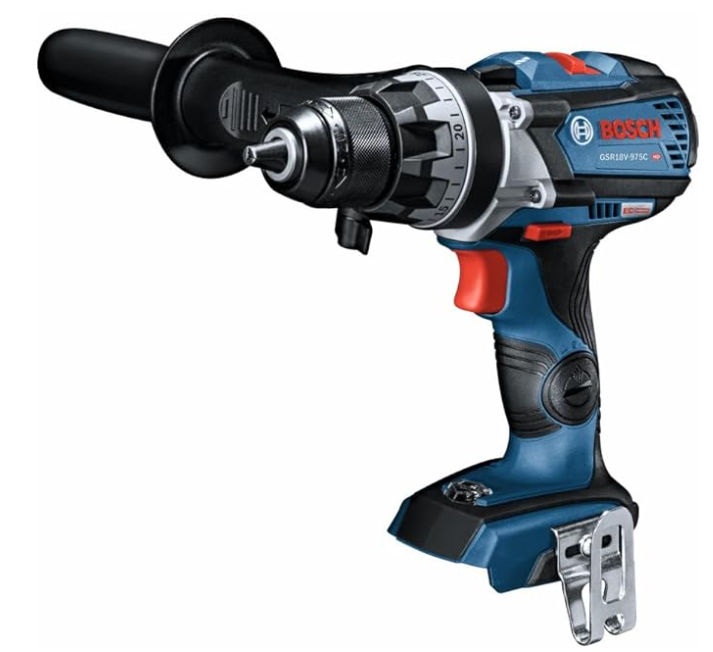Top Power Tools for Woodworking: Best Picks for Every Woodworker
BOSCH GENERAL
10/14/202514 min read


Introduction to Bosch Tools in Woodworking
Bosch has established itself as a leading brand in the woodworking industry, renowned for its commitment to quality, innovation, and reliability. Founded in 1886, the company has a rich history in manufacturing power tools and accessories that cater specifically to the needs of woodworkers. This long-standing tradition allows Bosch to produce tools that combine cutting-edge technology with user-friendly features, making them suitable for both novice and experienced craftsmen alike.
The reputation of Bosch tools among woodworkers is largely attributed to their performance and durability. Craftsmen rely on these tools for their precision, which is essential for intricate woodworking projects. The vast range of Bosch woodworking tools, including saws, drills, and sanders, is designed to meet the varied requirements of woodworkers. Each tool is meticulously engineered to ensure ease of use while providing exceptional results, whether one is completing a simple home improvement task or undertaking a complex furniture build.
One of the distinguishing features of Bosch tools is their integration of advanced technology, such as optimized motor designs and ergonomic handling. This focus on innovation ensures that users can work efficiently and effectively, minimizing user fatigue and maximizing productivity. Furthermore, Bosch tools are often equipped with safety features that enhance user security, a crucial aspect for anyone engaged in woodworking activities.
The brand’s dedication to producing high-quality tools has made them a trusted choice among professionals in the woodworking community. From woodworking hobbyists to seasoned experts, many choose Bosch for their reliable performance and superior craftsmanship. The trust that woodworkers place in Bosch products lays a solid foundation for exploring the best Bosch tools available, tailored for various woodworking applications.
Essential Bosch Tools for Woodworking Projects
When it comes to woodworking, having the right tools is essential for achieving precision and efficiency. Bosch has long been recognized for producing high-quality tools that cater to both amateur and professional woodworkers. Here, we will explore several Bosch tools that stand out for their practicality and effectiveness in woodworking projects.
The Bosch Router is an indispensable tool for any woodworker. This versatile machine allows for a variety of applications, including edge profiling, dado cutting, and even joint making. With features such as precise depth adjustments and soft-start technology, woodworkers can ensure a smooth operation, significantly improving the quality of their work.
Another essential tool is the Bosch Circular Saw, favored for its power and accuracy. This saw is particularly useful for making straight cuts in large sheets of plywood or lumber. With options available for both corded and cordless models, woodworkers can select a saw that fits their specific needs, whether working in a home workshop or on-site.
The Bosch Jigsaw is a go-to tool for intricate cuts and curves. It offers remarkable maneuverability and control, allowing woodworkers to create complex designs without compromising precision. With various blade options available, this tool is highly adaptable for different materials and applications, enhancing its value in any project.
Lastly, the Bosch Drill is a must-have for drilling holes and driving screws effectively. With high torque and variable speeds, this drill is designed to handle a range of tasks, from assembling furniture to drilling pilot holes for dowels. Its compact design ensures easy handling and reduced fatigue during extended use.
In conclusion, investing in these essential Bosch tools can significantly elevate the woodworking experience. They not only help achieve professional results but also enhance efficiency, making them suitable options for both novice and seasoned woodworkers.
Comparative Review: Best Bosch Woodworking Tools
1.BOSCH GTS15-10 10 Inch Portable Jobsite Table Saw


Click 'Shop Now!' to find on Amazon now...
🛠️ Specification
The Bosch GTS15‑10 is a jobsite‑grade portable table saw with a 10‑inch blade driven by a 15‑amp motor that spins at about 3,800 RPM. It has a 5/8‑inch arbor, allowing standard blades, and offers bevel cutting from ‑2° up to 47°. In terms of cutting capacity, it can cut up to about 3‑9/16 inches at 90°, and about 2‑1/2 inches at 45°, which allows for handling thick stock. The rip capacity (how far you can rip a board to the right of the blade) is approximately 32‑1/8 inches, and to the left about 14‑1/8 inches, which gives a lot of leeway for larger panels and wide boards. It comes mounted on a Gravity‑Rise Wheeled Stand (model GTA50W) with rubber‑composite 8‑inch wheels and a foot release for easier setup and mobility. The saw is fairly heavy for portability—around 91 pounds—but the wheeled stand helps with moving it. Other features include a Smart Guard safety system (riving knife, anti‑kickback pawls, barrier guard), a convenience brake that stops the blade in about three seconds, soft‑start circuitry to reduce stress on electrical circuits, an electronically regulated speed to help maintain RPM under load, and on‑tool storage for accessories like the rip fence, miter gauge, blade wrench, push stick, etc.
✅ Advantages and Disadvantages
Advantages:
One of the strongest points of the GTS15‑10 is its balance of power and capacity. With a 15‑amp motor and 3,800 RPM, it can make clean, strong cuts even through hardwood, not just softwoods or thin boards. The large rip capacity lets you work with full sheets of plywood or large boards without needing to reposition frequently, which saves time and improves accuracy. The wheeled stand is very helpful for portability: though the saw is heavy, the stand makes it much more manageable to move around a job site or workshop, and setup is fairly fast. Safety features are well thought through—having a riving knife and anti‑kickback protections, along with the convenience brake, make it safer for common woodworking tasks. The rack‑and‑pinion fence aids precise adjustments, which is beneficial for repeatable cuts. Also, speed regulation helps avoid bogging down when making deeper cuts or ripping thicker material.
Disadvantages:
On the downside, the weight—around 91 lb plus stand—is still heavy, meaning transporting it by one person (especially up stairs or into tight spaces) can be a challenge. Even with wheels, it's bulky. For hobbyists with limited workshop space, the footprint and the space needed for the stand might be more than they want. While many features are great, precision parts like the miter gauge and certain calibrations may need tweaking out of the box; some users report needing to fine‑tune the fence alignment or blade flatness to get ideal results. Also, for very fine or delicate joinery work, the saw (like many jobsite saws) may not match the finesse of stationary high-end cabinet saws or benchtop saws with finer tolerances. Dust collection is decent but not perfect; because it’s open frame, sawdust still disperses, so additional dust extraction or cleaning tends to be needed. Finally, the convenience brake, while excellent for safety, adds some complexity, and might mean slightly more maintenance.
🔍 My Review
Using the GTS15‑10 over several woodworking projects (furniture panels, shelving, hardwood ripping), I’ve found it to be one of the more capable jobsite saws I’ve used. It certainly handles demanding cuts: ripping wider boards feels smooth, and even crosscuts are clean when setup is correct. I especially like the wheeled stand—though lifting it is a workout, once it’s in position the mobility is great for shifting between sites or rearranging workshop space. The blade brake is a real advantage; it gives peace of mind when finishing cuts or removing offcuts. The safety guard system works well without hiding the blade too much; I still feel in control and visible while staying safe.
Where it struggles is in fine detail or precision joinery—if I'm doing a project with tight tolerances, I sometimes notice minor variations, especially in miter cuts or delicate edge joins, which require extra checking and adjustment. Also, the saw is loud, and dust spread is noticeable unless I have good extraction. Maneuvering the saw in small workshops is possible but tight; I need to budget space around it for safety and blade clearance. Overall, though, for woodworkers who need both portability and power, this saw delivers very well—it’s more than a basic jobsite saw, and often feels closer to stationary performance in the cuts it can make.
🗣️ Other Customers’ Reviews
Lots of other users are impressed with how much cutting performance they get from this saw. Many praise the motor’s ability to rip hardwoods and thickness without bogging down, and consistently mention the large rip capacity as a standout. Reviewers often highlight the rack‑and‑pinion fence as something that makes layout and repeated cuts faster and more accurate. The wheeled stand also gets frequent commendation; many say it’s the feature that makes this saw usable even in less permanent setups, and that the setup / teardown time is reasonable.
On the critical side, customers do report a few recurring complaints. A common one is that the miter gauge is not great — some say it has too much play or needs improving or replacing to get tighter, precise cuts. Some units arrive with minor alignment or flatness issues, like the throat plate or table surface needing shims or adjustments. Dust control is another gripe: because of the open design, sawdust tends to spray around unless a good vacuum or dust‑collection setup is used. The saw’s weight is also a point of concern: several buyers say moving it alone is hard, or that the saw plus stand is more cumbersome than expected. Also, while the blade stop is appreciated, users note that after months of heavy use, certain safety parts (guard assembly, anti‑kickback pawls) can need maintenance or replacement. Many say it’s a great saw for what it costs, especially compared with smaller benchtop models, but that to get precision and longevity, you’ll want to invest in a good blade, maintain alignment, and possibly upgrade accessories like the miter gauge.
2.Bosch Tools Track Saw - GKT13-225L 6-1/2 In. Precision Saw


Click 'Shop Now!' to find on Amazon now...
🛠️ Specification
The Bosch GKT13-225L is a 6-1/2 inch plunge track saw built for precision and portability, making it ideal for woodworking applications like cabinetry, furniture making, and on-site panel cutting. It features a 13-amp motor with a variable speed range of approximately 3,600 to 6,250 RPM. This speed control helps maintain consistent performance, even under load.
It has a maximum cut depth of around 2-1/4 inches at 90 degrees and slightly less at a 45-degree bevel. The bevel range goes from -1° to +47°, which is useful for a variety of angled cuts. The saw is compatible with Bosch's FSN guide rails (sold separately), and includes fine adjustment knobs to dial in the track fit for extremely straight, splinter-free cuts.
Other key features include soft-start motor control, electronic brake, overload protection, a swiveling dust port for vacuum attachment, and a magnesium footplate for durability with less weight. The saw weighs approximately 10.4 pounds without the track, making it relatively portable for jobsite or workshop use.
✅ Advantages and Disadvantages
Advantages:
One of the standout advantages of this track saw is its ability to deliver clean, splinter-free cuts that rival a table saw—without needing a bulky setup. This makes it especially valuable for cutting full sheets of plywood or trimming hardwood panels. The plunge function allows for controlled, precise start points, making it excellent for cut-outs or mid-panel work.
The variable speed control and consistent RPM under load mean you get clean cuts across a range of materials, not just softwood. It’s also relatively quiet for a saw in this category and has strong dust collection capabilities when connected to a vacuum. The bevel capacity gives woodworkers flexibility when working on angled or custom joinery. The overall build feels professional and durable, which adds confidence when making fine cuts.
Disadvantages:
Despite its strengths, the GKT13-225L does have some trade-offs. The biggest is cost—it's not the cheapest track saw on the market, and when you factor in the guide rails and accessories, it becomes a significant investment. Additionally, the saw on its own isn’t extremely lightweight, and adding the track system increases setup complexity, especially in tight spaces.
Some users might find the depth of cut slightly limiting compared to full-size circular or table saws. The tool also requires calibration and adjustment out of the box to ensure maximum precision. And while the dust port is useful, it's most effective only with a high-suction vacuum.
🔍 My Review
From my experience, the Bosch GKT13-225L is a solid performer that quickly became a go-to tool for sheet cutting and fine woodworking projects. The first time I used it on a full 3/4" plywood panel, the difference in edge quality compared to a circular saw was immediately noticeable—no tear-out, and the cut line was surgical.
Setup does take a bit of time, especially if you're aligning the track carefully, but once it's dialed in, the accuracy is impressive. I really appreciated the plunge mechanism, which feels smooth and secure. For furniture and cabinet projects, this saw makes tasks like trimming doors or making perfect rips much easier than wrestling with a table saw.
The portability is great, but it’s not something I would carry around all day unless I had to—especially with the rail system. Still, for controlled, clean woodworking in or outside the shop, this saw more than justifies its place in the tool lineup.
🗣️ Other Customers’ Reviews
Woodworkers and professionals generally speak highly of the Bosch GKT13-225L, particularly praising its cutting accuracy, smooth plunge action, and solid build. Many users note that the saw performs exceptionally well on hardwoods, cabinet-grade plywood, and laminated panels. The dust collection, when paired with a vacuum, is often cited as a major plus—keeping workspaces cleaner and visibility high during cuts.
On the downside, a few users mention that the initial setup and calibration can be time-consuming, especially for those unfamiliar with track saw systems. Others have pointed out that additional costs for guide rails and accessories can make the tool less attractive for casual or budget-conscious buyers.
Despite these minor drawbacks, the majority of feedback highlights the Bosch track saw as a professional-grade tool that consistently delivers clean, reliable cuts—making it a smart investment for serious woodworking tasks.
3.BOSCH GSR18V-975CN 18V Brushless


Click 'Shop Now!' to find on Amazon now...
🛠️ Specification
The Bosch GSR18V‑975CN is a professional 18-volt brushless drill/driver built for demanding tasks in construction, woodworking or general trades. It delivers up to 975 inch‑pounds (in‑lb) of torque in direct drive mode. The tool features two speed ranges: a high-speed mode up to about 2,100 RPM and a high-power mode up to approximately 480 RPM, lending it flexibility between fast drilling and torque-heavy driving. It is equipped with a 25‑setting precision clutch, which helps in controlling tight screws and prevents overdriving or damaging workpieces. The device includes Bosch’s KickBack Control, a safety feature that detects sudden binding and attempts to reduce torque reaction.
Weight is relatively light for what it offers: the tool (body alone, without battery) weighs about 3.4 lbs. It has an all-metal chuck (½ inch), providing durability and better bit retention under heavy load. The drill is “Connected-Ready” — meaning you can attach a module (sold separately) to enable wireless connectivity with Bosch’s app, allowing you to customize settings, monitor performance, and receive diagnostics. Other features include a built-in LED for work area illumination, side-assist handle for better control under tough conditions, rapid mode selector (switching between drilling/driving mode without needing to adjust the clutch), and electronic protection circuits to guard motor and battery against overload.
✅ Advantages and Disadvantages
Advantages:
One of the biggest strengths is the balance between power and control. With nearly 975 in‑lb of torque available, this drill can tackle thick hardwoods, large-diameter screws, and deep mortises, while still offering fine control through its 25-clutch settings for delicate tasks. The dual-speed system provides good flexibility: use the high-RPM mode for rapid drilling, and shift to the high-torque setting when driving long fasteners or working in dense wood. The KickBack Control adds a safety layer, which is especially useful when working in situations where bits can bind suddenly (like hidden knots or screws). The all-metal chuck and solid construction add to durability, which is important when your tool gets knocked around in jobsite or workshop settings. The “Connected-Ready” design is forward-looking: for those who want to monitor or customize their tool behavior via an app, that capability is a nice bonus. Also, the tool’s relatively modest weight (excluding battery) means it’s more comfortable to use overhead or in awkward positions compared to heavier heavy-duty drills.
Disadvantages:
However, it’s not perfect. Since it’s a bare tool, you must factor in the cost of batteries and a charger (if you don’t already own compatible Bosch 18V batteries), which adds to total investment. The presence of connectivity features is optional — without the connectivity module, you lose those app-based benefits. The torque, while strong, is sometimes felt to be a bit more than needed for fine woodworking or smaller joinery tasks; small mistakes in speed or clutch setting can lead to overdriving screws or marring delicate wood edges. The battery weight, once you add a full-capacity battery, can make the whole setup quite heavier, reducing comfort over long use sessions. Some users note that out-of-box calibration (especially for the clutch or mode selector) may not be perfect, so you’ll want to test and adjust before trusting the tool for final work. In high-precision or extremely fine cabinetry tasks, this tool may not match the finesse of specialized low-speed or micro-drills.Turning speeds might feel less controllable at very low ranges, especially with small bits or pilot holes in delicate hardwoods.
🔍 My Review
I’ve used the Bosch GSR18V‑975CN for several woodworking jobs — everything from framing and screw-down substructure to assembling cabinetry and installing hardware — and it has proved itself to be a very capable all-around driver/drill. When I needed to drive long screws into structural frames, the torque and speed balance allowed me to do so without pausing or bogging, even in dense wood. Its clutch allowed me to adjust for more delicate screw jobs (furniture hardware, hinge mounting) without stripping the heads or damaging wood. The grip and side-assist handle help maintain control during heavier tasks; when a bit approached a knot or encountered resistance, I felt confident in its stability. The LED is helpful in darker corners of cabinets or inside workstations.
That said, I did notice some limitations. For precise, fine joinery I sometimes found the transitions a bit coarse — the clutch jumps or the RPMs feel aggressive if you're not used to managing them carefully. With heavier battery packs, the tool does feel bulkier in tight overhead or awkward reaches. Also, I spent a few minutes setting up the mode selector and adjusting for bit play — not a dealbreaker, but something you should do before serious jobs. Overall, though, for a woodworking shop or construction environment where you need one drill/driver that can do a lot, it’s a solid, reliable performer.
🗣️ Other Customers’ Reviews
Many users echo my positive impressions. They frequently praise the torque and motor strength, saying that the tool handles dense hardwoods and demanding jobs without losing performance. Several mention that the KickBack Control gives extra confidence for tougher tasks where bits might grab. The ergonomics and balance receive compliments: users say it feels comfortable to hold, even for extended periods, until battery weight is factored in.
Criticism tends to focus on practicalities. Some customers mention that the connectivity module (if purchased) is a little finicky, or that they don’t use that feature and feel it’s an unnecessary add-on. Others note that the clutch and speed selector, out of the box, may require fine-tuning to avoid slip or mis-setting. A fairly common complaint is about battery weight and how the fully loaded drill becomes somewhat heavy for overhead work or prolonged use. A few comments discuss that small details, like the very low RPM range in torque mode, may feel a bit jumpy or less fluid with smaller bits or precision tasks. Still, across many reviews, the consensus is that for what it delivers — torque, control, durability — it provides excellent value and reliability in woodworking and general trade use.
Tips for Choosing the Right Bosch Tools for Your Workshop
When it comes to woodworking, selecting the right Bosch tools is essential for achieving the desired results while ensuring efficiency and safety in your workshop. Several factors should guide your decision-making process, allowing you to tailor your choice of tools to suit your specific woodworking projects and skill levels.
First and foremost, consider your budget. Bosch tools are available across a range of price points, catering to both amateur woodworkers and seasoned professionals. Establishing a budget will help you narrow down your options and make informed choices without overspending. Additionally, frequency of use is a critical factor. If you plan to engage in woodworking regularly, investing in higher-quality tools might be a wise decision. Conversely, for infrequent projects, more economical options could suffice.
The types of woodworking tasks you anticipate performing also play a significant role in your tool selection. Assess the specific projects you wish to undertake—whether it’s furniture making, cabinetry, or general repairs. Different projects may demand specific types of Bosch tools, such as routers, saws, or sanders. Knowing your project requirements will streamline your search for the right equipment.
Maintaining your Bosch tools properly is crucial to their longevity and performance. Regular cleaning and inspections can prevent wear and tear, ensuring that your tools operate at peak efficiency for years to come. Additionally, consider any relevant accessories that can enhance the functionality of your Bosch tools, such as blades, bits, or dust collection attachments, which can improve both safety and work quality.
By taking these factors into account, woodworkers can make informed decisions when investing in Bosch tools, tailoring their selections to meet individual needs and specific woodworking tasks.
